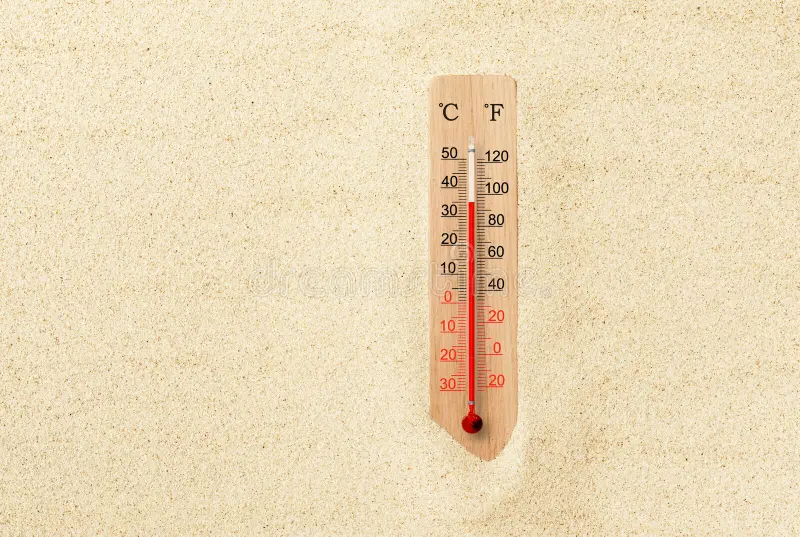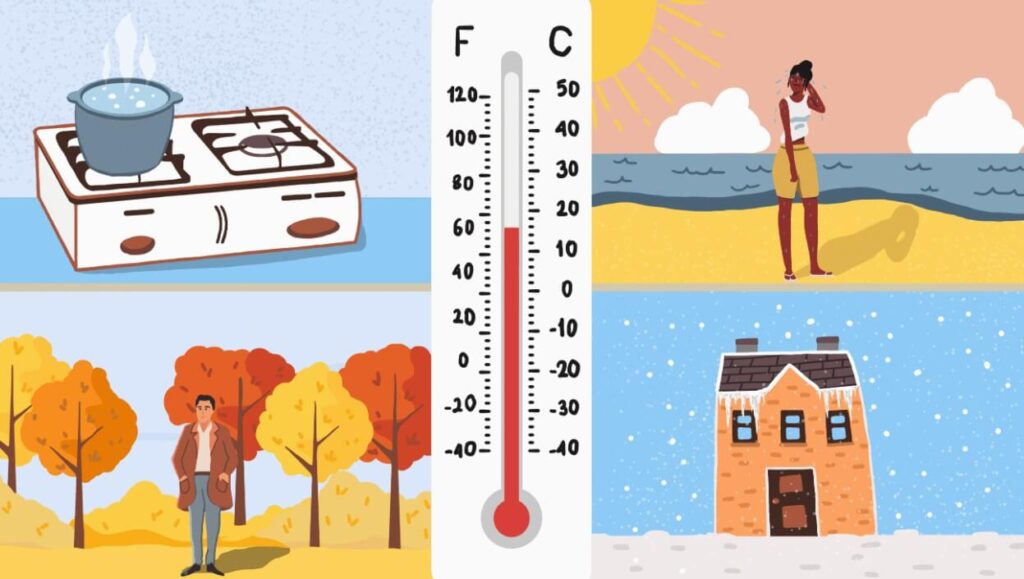Understanding temperature conversions between Celsius and Fahrenheit is essential in a wide range of fields, from cooking and scientific research to industrial work. Knowing how to convert 63 degrees Celsius to Fahrenheit can be particularly useful in various day-to-day tasks. This article will dive deeper into the conversion process, explain how this temperature is used in various practical scenarios, and discuss its significance across different industries.
What is 63 Degrees Celsius in Fahrenheit?

To convert 63°C to Fahrenheit, you can use the following well-known formula:
F = (C × 9/5) + 32
Step-by-Step Conversion Process:
- Multiply the Celsius temperature (63) by 9/5.
- 63 × 9/5 = 113.4
- 63 × 9/5 = 113.4
- Add 32 to the result:
- 113.4 + 32 = 145.4°F
- 113.4 + 32 = 145.4°F
Therefore, 63 degrees Celsius equals 145.4 degrees Fahrenheit.
It’s that simple! Now that you understand how to convert Celsius to Fahrenheit, let’s explore the importance of this specific temperature in different contexts.
Practical Uses of 63 Degrees Celsius (145.4°F)
1. Cooking and Food Safety
63°C (145.4°F) is a very common temperature in cooking, particularly for meats like poultry, beef, and pork. Reaching this temperature ensures that harmful bacteria like Salmonella and E. coli are killed, making the food safe to consume. The U.S. Food and Drug Administration (FDA) recommends that chicken and other poultry products should be cooked to an internal temperature of 165°F (74°C), and 63°C (145.4°F) is a safe starting point for other types of meats.
For instance, when cooking steak or roast beef, this temperature is often used for medium-rare cooking to preserve the tenderness and flavor of the meat. Additionally, 63°C is ideal for reheating leftovers as it helps preserve the texture and moisture of the food without overcooking.
2. Scientific and Laboratory Applications
In laboratories, especially in the fields of microbiology, biotechnology, and chemistry, precise temperature control is essential. 63°C is commonly used in incubation chambers to grow bacterial cultures or to process chemical reactions that require controlled heating. For example, some types of bacteria grow best at 63°C because it’s the optimal temperature for their reproduction.
In addition, many biochemical reactions and protein folding experiments require 63°C for efficient enzyme activation. This temperature helps scientists ensure that their experiments yield accurate and consistent results. It’s also useful in sterilization procedures, as prolonged exposure to temperatures above 60°C helps eliminate pathogens without causing damage to the equipment or samples.
3. Industrial and Mechanical Uses
In many industrial settings, 63°C is a common temperature for various mechanical and manufacturing processes. For example, certain types of machines, like plastic molding machines, require specific temperature settings to melt materials and shape them without compromising their structural integrity.
Moreover, some chemical reactors and heat exchangers are designed to operate at around 63°C. Maintaining precise temperatures is crucial in industries like pharmaceuticals, textiles, and food production, where quality and consistency are paramount.
4. Everyday Uses: Weather and Temperature Monitoring
While 63°C is not a typical outdoor temperature, it’s useful to understand its significance in terms of extreme heat. For example, heatwaves in desert climates can cause temperatures to rise significantly, sometimes reaching near 63°C or higher.
In extreme heat scenarios, such as during wildfires or industrial heat zones, temperatures can escalate beyond normal expectations. In these cases, knowing how to measure and convert temperatures like 63°C becomes important for monitoring and managing heat-related risks to human health and safety.
How to Convert Celsius to Fahrenheit?

While we’ve already covered the formula to convert 63°C to Fahrenheit, here’s a reminder on how to convert any Celsius temperature to Fahrenheit:
F = (C × 9/5) + 32
Example Conversion:
- 50°C to Fahrenheit:
F = (50 × 9/5) + 32 = 122°F - 100°C to Fahrenheit:
F = (100 × 9/5) + 32 = 212°F
This simple conversion formula allows you to change Celsius temperatures to Fahrenheit easily, whether you’re in the kitchen, at the lab, or dealing with temperature-based data.
Why is This Conversion Important?
Understanding and using temperature conversions accurately is crucial in many fields. Whether you’re cooking a dish, performing a scientific experiment, or managing industrial machinery, having a good grasp of temperature units can ensure safety, precision, and efficiency. For example, using 63°C (145.4°F) in cooking or incubating bacterial cultures is a matter of safety — ensuring the food is safe to eat or the samples are properly processed.
FAQs About 63 Degrees Celsius to Fahrenheit
1. What is 63 degrees Celsius in Fahrenheit?
63°C = 145.4°F.
2. What is the ideal temperature for cooking meat?
63°C is perfect for cooking medium-rare steaks and for reheating food, as it ensures safety and preserves flavor.
3. How do I convert Celsius to Fahrenheit?
Use the formula F = (C × 9/5) + 32 to convert any Celsius temperature to Fahrenheit.
4. Is 63°C too hot for human exposure?
Yes, 63°C is considered extremely hot and can cause serious burns if you come into direct contact with it.
5. What industries use 63°C?
Industries like pharmaceuticals, textiles, and food production often use 63°C for heat treatment, sterilization, and manufacturing processes.
6. Is 63°C used in scientific research?
Yes, 63°C is often used in labs for incubating bacterial cultures and conducting experiments that require controlled heating.
7. What are the dangers of working with 63°C?
Temperatures over 60°C can cause burns and heatstroke, so proper safety measures are important in industrial and scientific settings.
8. Can I use 63°C for baking or roasting?
Yes, for slow roasting or certain delicate cooking methods, 63°C can be used, especially for meats and poultry.
Conclusion
To recap, 63°C is equal to 145.4°F. This temperature has wide applications, from cooking poultry and ensuring food safety, to incubating biological samples in laboratories. 63°C is also used in various industrial processes where heat treatment or material processing is required. Learning how to convert Celsius to Fahrenheit can help you make accurate decisions in cooking, science, industry, and beyond. Whether you’re working in a kitchen, a laboratory, or in an industrial setting, knowing how to handle different temperature units accurately is essential for achieving the best results.
Related Post
- Antonio Chi Su – Exploring the Identity Behind the Name!
- Lepbound – Exploring the Meaning, Uses, and Impact of This Emerging Term!
- Residencerenew Com – Your Trusted Platform for Modern Home Renewal and Smart Living!
- 800 Wtlqv Vesdtm Street Rsjhwmt Kc 06137 – Decoding the Mysterious Address!
- 3381012544 – What You Need to Know About This Mysterious Phone Number!










